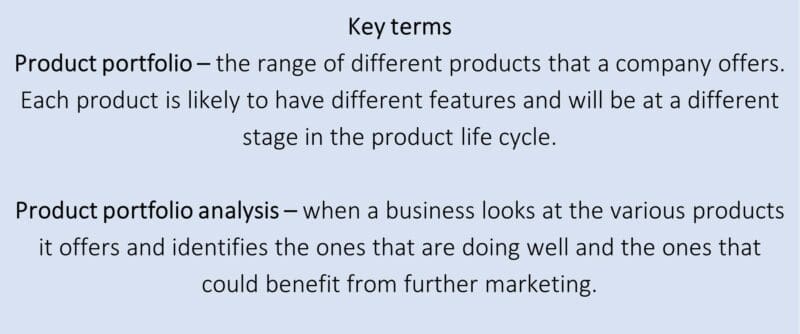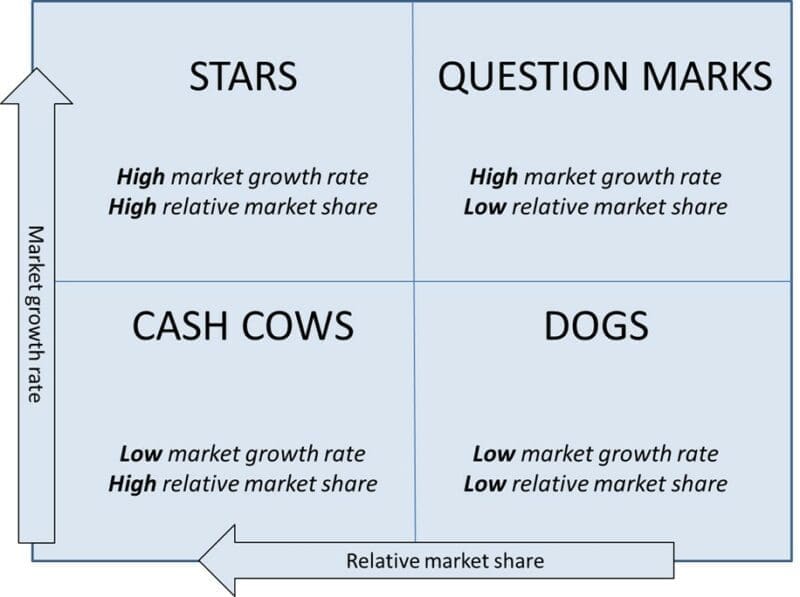In this post
Different types of products
It is very rare that a business will offer just one product to its customers. Most will offer a wide range of products so that people can make a choice on what they purchase and buy something that is suited to their needs. This is called a ‘product portfolio’. Each portfolio will have old and new products within it that are at different stages in their life cycles. When looking at ways to increase sales, a business must be able to understand its own product portfolio to see the products that are doing well and the ones that are performing poorly. This is known as a ‘product portfolio analysis’.

What is the Boston Matrix?
One of the best techniques for product portfolio analysis is known as the Boston Matrix. This matrix is named after the Boston Consulting Group who came up with the technique and which is closely linked to the product life cycle.
The Boston Matrix looks at two specific things – the growth of a market and the strength of a product within that market. For example, a business will look at the demand for certain products and whether this is growing as well as the performance of its own products that are on offer. This analysis results in four different categories: ‘Stars’, ‘Cash cows’, ‘Question marks’ and ‘Dogs’.
Stars
A star product is something that is sold in a market that is growing quickly. The strength of the particular product within this market is also growing so the product has a very high level of sales. Output will be growing and the demand by customers will be increasing dramatically. This is a great product for a business as it will be easy to sell but cash flow may not be very high since money coming in will be spent to keep up with high production rates. A star product will likely be in the growth period of the product life cycle as sales are growing each month.
Cash cows
A cash cow is a product with a strong market share and is therefore likely to be at the maturity stage in its life cycle. The market itself is not really growing much so sales are quite steady with this type of product but are continuously high so result in a good profit. Since sales are holding steady, the business will not need to invest in more manufacturing techniques so profitability is likely to be the highest of any product in the Boston Matrix as the business will have perfected the manufacturing and marketing of a cash cow product. Extensions may be used to generate sales over a longer period of time.
Question marks
This type of product is in a market that is growing quickly but has a low share in this market. This can cause a problem for a business as it will need to make a decision on what is to be done with it. The reasons why the product has not taken off should be found and the company will seek to increase the market share of a question mark product in order to capitalise on the expanding market. This can result in a lot of money being spent on the product; a question mark is closely related to a product that is still in the development stage. Businesses will attempt to convert a question mark into a star product by investing in product development and marketing.
Dogs
A product with a low share of a market that is not expanding is called a dog. This is the worst type of product to have, as not only is the product not successful in the market, the market itself is quite poor. This type of product is usually classed as being in the decline phase of the product life cycle and might be scrapped by a business as it fails to make money.




